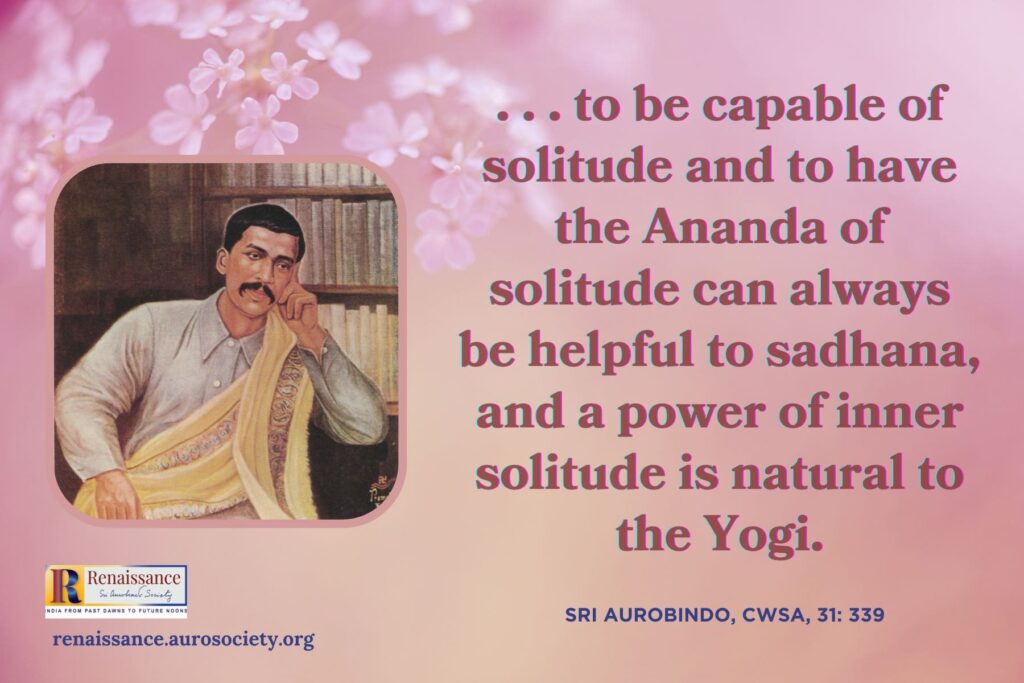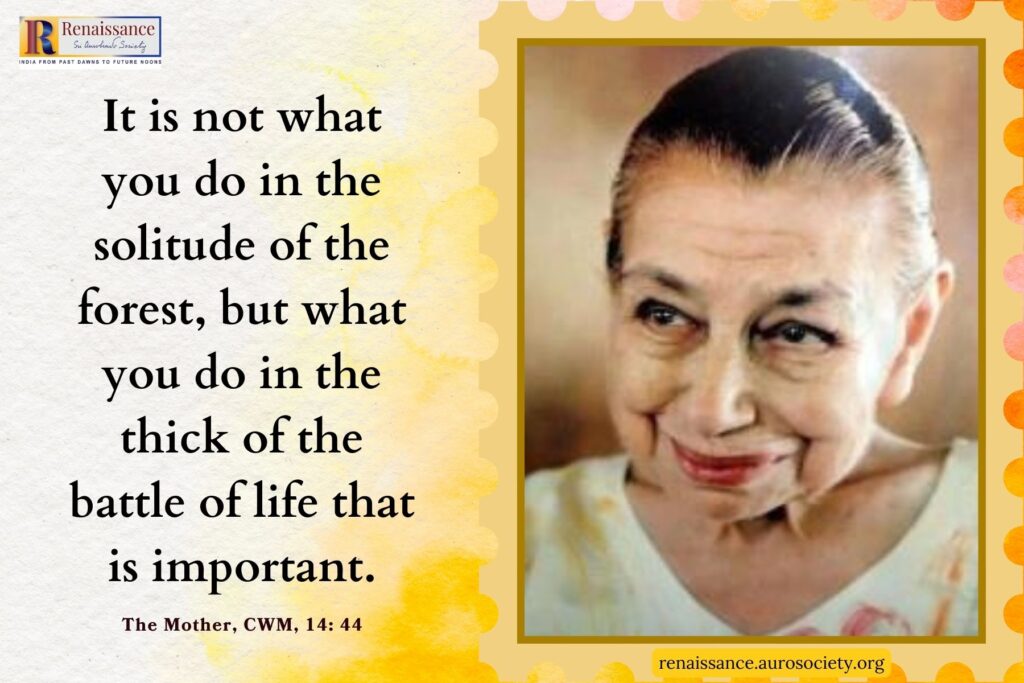Volume V, Issue 3
Author: Narendra Murty
Editor’s Note: From Guru Nanak to William Blake and Kahlil Gibran, from Tagore to Sri Aurobindo — immerse yourself in the beautiful poetic expressions the author shares of the Immanent Divine, the Divine present in myriad forms in Nature.

What if we, like stubborn children demand that we would like to see God, our Divine parent? For the sake of indulging the child in us, if we assume for a while that God has a form and can be perceived through our senses, what could that form be like? One thing is certain. It cannot be a form created by man. We will have difficulty in perceiving God in a skyscraper or in an ocean liner. Because the evidence of these things being “man-made” is too strong in our minds. So, is there any physical form which is not man-made yet it is simply there?
The answer is a resounding YES.
In fact, the entire physical universe and the natural world are simply there! We don’t know where they came from and how they came. Yes, the cosmologists in a smug manner declare that the Big Bang caused the universe. But ask them what caused the Big Bang? And immediately you would find them going into an elaborate routine of scientific gobbledygook. Their responses go something like:
Such a question has no meaning. Space and Time began with the Big Bang. To ask for a cause for the Big Bang would take us to a point before the Big Bang. Since time itself came into existence with the Big Bang, there is no ‘before’ and hence no cause can be attributed to it. The question of cause and effect pertain to time. Since time itself was non-existent before the Big Bang, no cause can be linked to the Big Bang. The Big Bang is causelesss!
This in my view is nothing but verbal gymnastics. Though we know that everything that has a beginning is caused by something, the Big Bang itself, the ultimate beginning, is caused by nothing? Some cosmologists have even termed the Universe as the biggest free lunch! So, the origin of the universe and the entire natural world is a great unsolved mystery.
The higher esoteric wisdom says that the Divine has two attributes: the Transcendental and the Immanent.
The Transcendental is that which lies beyond and behind the physical manifestation (cause for the Big Bang) which the human intellect cannot comprehend. What the human intellect does perceive and comprehend is the Immanent, i.e., Creation or the universe. This aspect of the Divine has been called the Virat. The physical universe and the world of Nature is the visible face of the Divine. Though it is right there in front of our eyes, we do not know its origin and true nature.
That is why throughout human history we find that the saints, artists and poets have seen in Nature a reflection of the Divine. They drew their inspiration from Nature and Nature’s beauty and saw it as an expression of the Divine Ananda – where God seems to be revelling in his millions of forms – of shapes and colour. He seems to be playing with his own myriad forms and enjoying the various manifestations of his Divine abundance – millions of flowers, trees, fruits, fishes, animals, birds; it’s a riotous extravagance of shapes, sounds and colours. This is what we understand by Divine Immanence. God in Creation.
In the Gitanjali, Tagore writes:
In this playhouse of infinite forms, I have had my play
And here have I caught sight of him that is formless.
My whole body and my limbs have thrilled with his touch
Who is beyond touch…
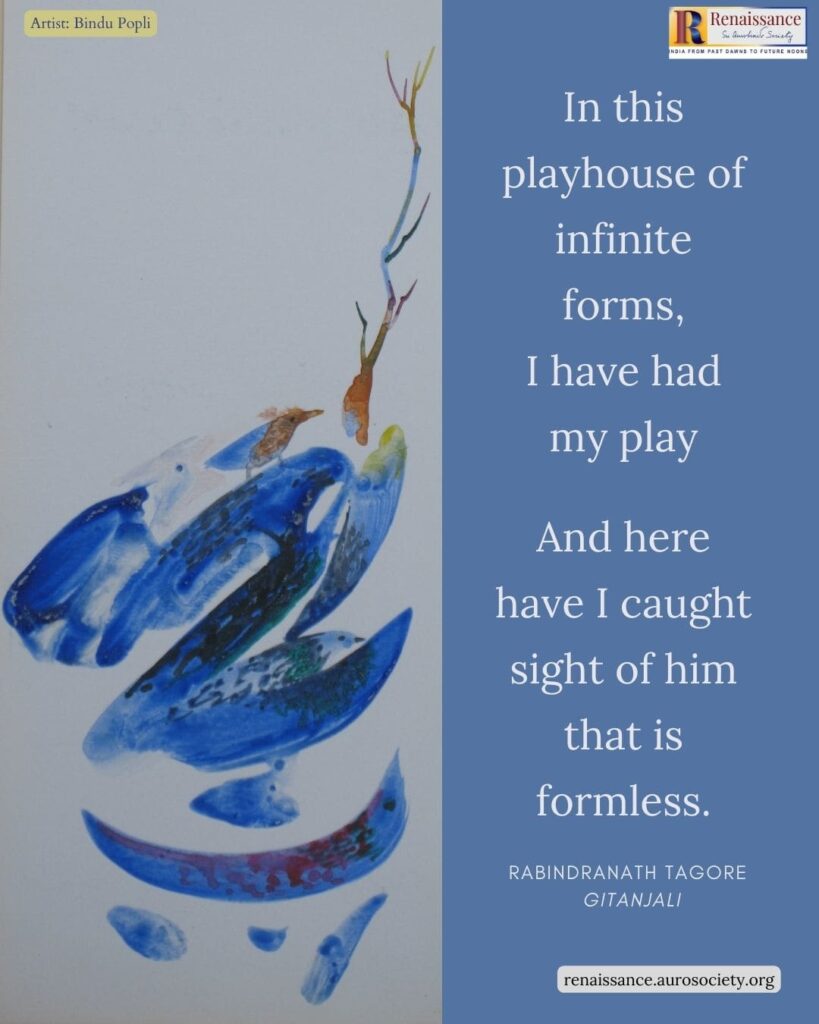
In all the religious literatures of the world, we usually find statements like “God created the universe” or such similar ideas. The Bible states that God created the world for six continuous days and he rested on the seventh day. It implies that God is separate from his creation. That Creation is his handiwork and he is separate from it. In the same manner that a painter is separate from his painting. Or in a way a sculptor and his sculpture are separate. In other words, the creator, after his work of creation is complete, stands apart from it and is no longer a participant in his creation.
However, in Sanatana Dharma, the Immanent God has been conceived as Nataraja – The Cosmic Dancer.
This depiction of a dancer is very significant. A dancer is always present in his or her dance. If a dancer pauses the dance even for a moment, the dance exists no more. So, a dancer is never separate from his or her dance. Nataraja, the Cosmic Dancer symbolizes that this universe is his dance. He is not outside it but through his dance, he sustains the universe. He is ever present in his creation.
In other words, Brahman or God is not separate from the world. Brahman is the world. That is why the Isha Upanishad declares: Isha vasyam idam sarvam – the whole universe is enveloped by the Lord. This universe is not an object created by the Lord from which he stands apart. But this universe is his dance in which he is ever present. This is the reason why the saints, artists and poets have always experienced the Immanent Divine – in Creation and Nature.
Guru Nanak sings:
Hay Hari Sundar, Hay Guru Sundar
Tere charan mein sheesh namaya
Ban ban mein tu Shyamal Shyamal
Giri giri mein to unnat unnat
Sarita sarita mein Chanchal Chanchal
Sagara sagara gambhira hey GuruO God Beautiful; O Guru Beautiful,
At thy feet, I bow my head
In the forest, Thou art green
In the mountain, Thou art high
In the river, Thou art restless
In the ocean, Thou art grave….
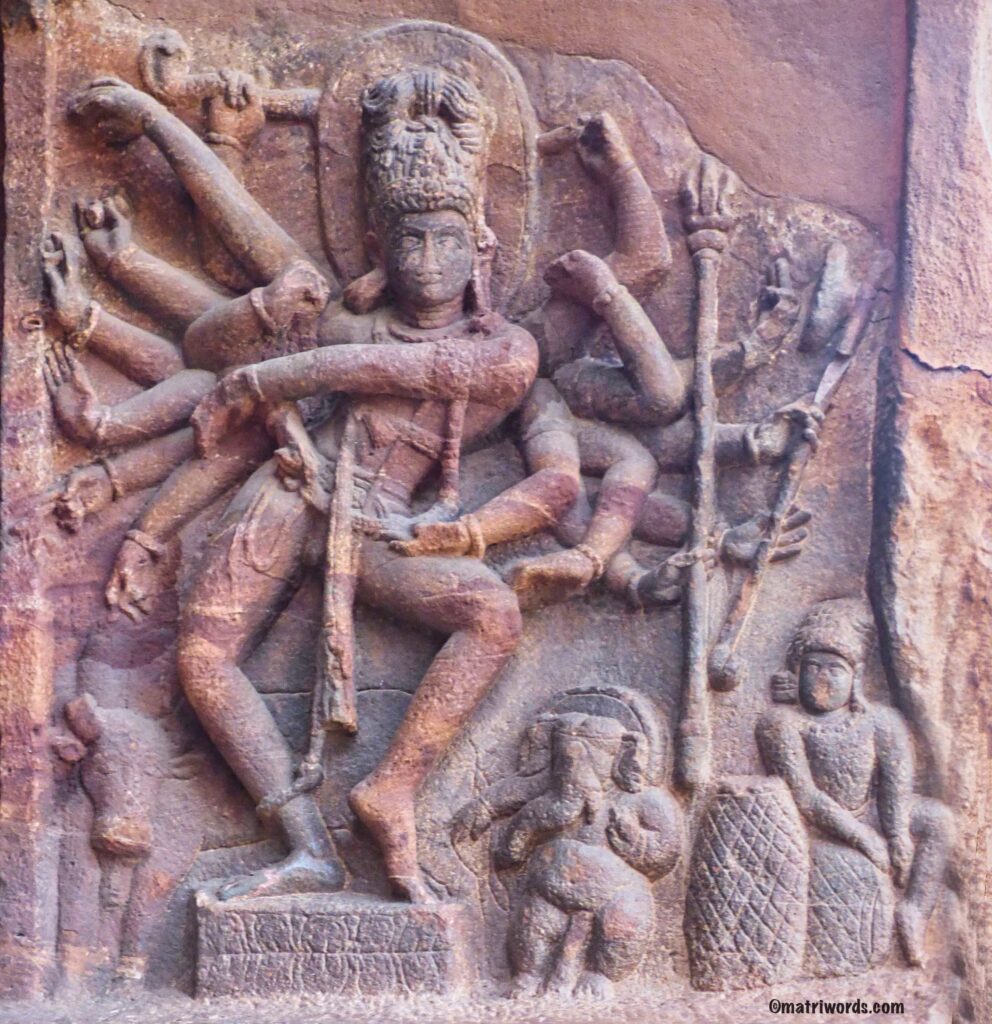
There is a connection between that Transcendental dimension and this world where the Divine is Immanent – because the Divine pervades everything. Only we need to have the vision to catch this connection. The mystic poet William Blake has expressed this relationship between the Nameless and the Formless Divine with the world of names and forms in these immortal lines:
To see a World in a Grain of Sand,
~ William Blake, Auguries of Innocence
And a Heaven in a Wild Flower…
Man’s mind and senses are finite. The finite can grasp and comprehend only that which is finite. Infinity is beyond its reach.
But the miracle is that the finite exists in the Infinite! Just as the wave exists in the ocean. The finite doesn’t exist in a vacuum! It has the infinite as its very ground of being. Behind every finite appearance lies the Infinite. As Blake says: To see a world in a grain of sand…
The world is the universe which is infinite. We cannot see the entire world because our vision is limited. Our eyes are finite. With our finite eyes we can see a grain of sand. This is enough – because the world is reflected in that grain of sand – just as the ocean is contained in the wave – to some extent. The grain of sand is part of this vast universe, it has a basis. It is not isolated, abandoned.
Similarly, a Heaven in a wild flower… Heaven stands for the entire beauty of existence.
We cannot perceive the entire beauty of this creation but can see a reflection of that beauty in a wild flower, because it is a small wave in the ocean of beauty of existence. Because immeasurable Beauty exists, it gets reflected in the wild flower. The flower also has a basis, it is not in suspended animation. It reflects in its fragile form, the Divine beauty of existence.
Not only in static natural forms but the mystics and poets have seen the Immanent Divine in the dynamism and movements of Nature. In his iconic work The Prophet, the Lebanese poet Kahlil Gibran writes:
Among the hills, when you sit in the cool shade of the white poplars, sharing the peace and serenity of distant fields and meadows-then let your heart say in silence, “God rests in reason.”
And when the storm comes, and the mighty wind shakes the forest, and thunder and lightning proclaim the majesty of the sky, then let your heart say in awe, “God moves in passion.”
And we have Sri Aurobindo expressing the Immanent Divine in his own inimitable way in the poem titled WHO:
In the blue of the sky, in the green of the forest,
~ CWSA, Vol. 2, pp. 201-203
Whose is the hand that painted the glow?
[…]
In the pattern and bloom of the flowers He is woven,
In the luminous net of the stars He is caught
[…]
It is he in the sun who is ageless and deathless,
And into the midnight His shadow is thrown
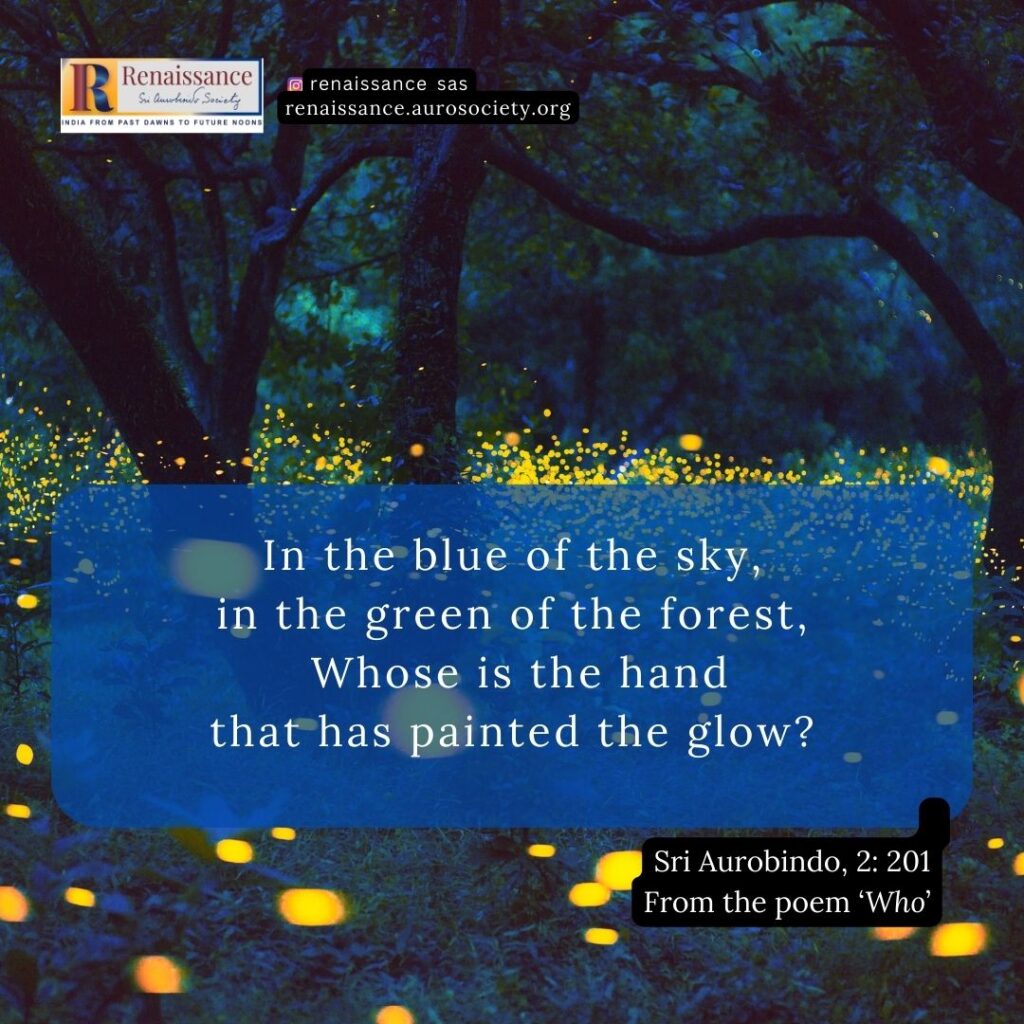
In these beautiful lines, Sri Aurobindo expresses the Immanent Divine, the Divine in Nature in exquisite imagery: Blue of the sky, Green of the forest – almost echoing the words of Nanak – which only goes on to show that seeing the Divine in Nature is the common experience of all the mystics, poets and saints of the world. In the bloom of the flowers He is woven; In the luminous net of the stars He is caught….compare this with the way the ordinary man looks at the flowers and the stars.
This is the difference between our mundane and prosaic eyesight and the divine vision of the mystic.
However, the poetic genius of Sri Aurobindo is not satisfied with describing only the Immanent Divine in the forms of the natural world. In the last two lines of WHO, he completes the picture by describing the Transcendental Divine who is the behind the ephemeral forms:
When darkness was blind and engulfed within darkness,
~ CWSA, Vol. 2, p. 203
He was seated within it immense and alone
In these two lines, Sri Aurobindo describes that which cannot be described. The Nameless and Formless behind the names and forms of the world. In the earlier lines, we found the Divine in manifestation described in exquisite imagery. In the last two lines, Sri Aurobindo expresses the Divine in non-manifestation. Poetry, mysticism and Divine vision – all come together to express the One – both in his Transcendence and Immanence. The Divine in manifestation and non-manifestation, get caught in the luminous net of the mystical poetry of Rishi Aurobindo.
Also read:
God at the Beginning, God in the Middle, God at the End, God Everywhere
~ Design: Beloo Mehra

